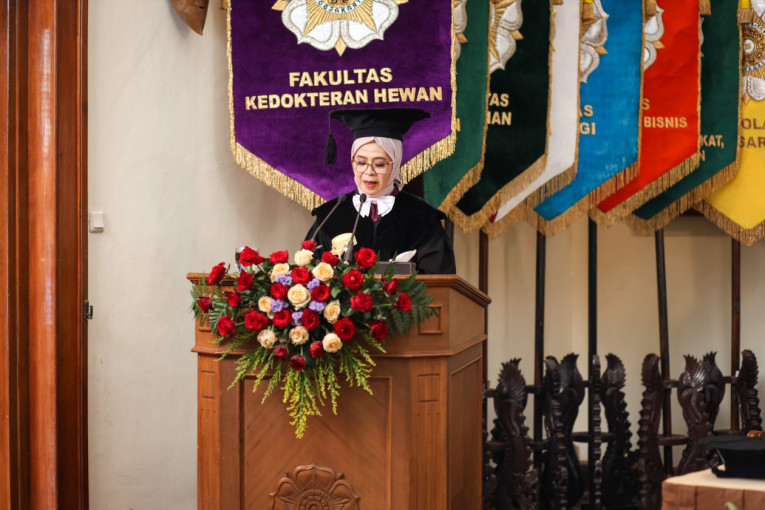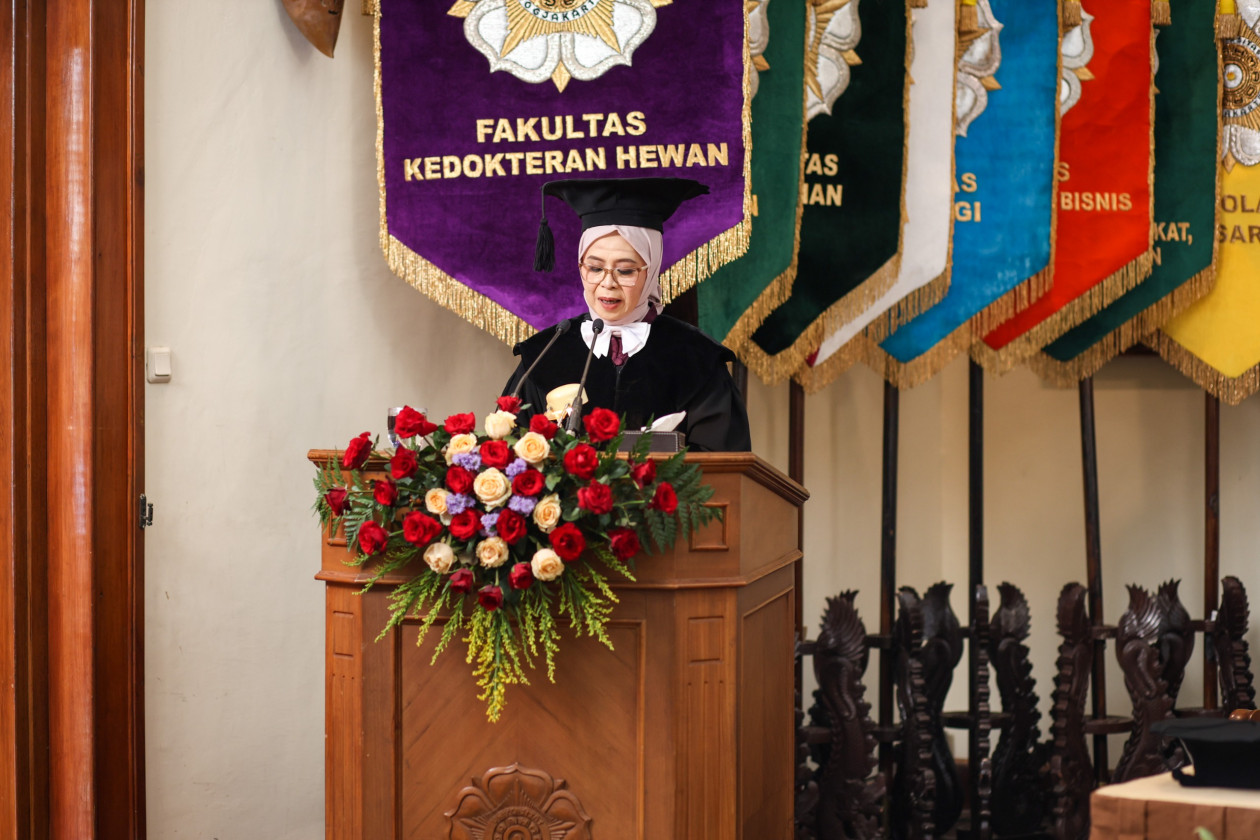Indonesia’s rich biodiversity faces severe threats of deforestation, climate change, and illegal hunting. This situation underscores the importance of conservation efforts and biodiversity preservation, including the molecular identification of wildlife.
According to Professor Rini Widayanti of the UGM Faculty of Veterinary Medicine, molecular identification of wildlife is crucial in conservation because some species may be challenging or even impossible to differentiate morphologically from similar species.
Moreover, molecular identification can assist in obtaining crucial information for planning effective breeding programs and management.
“Equally important, molecular identification is used to detect diseases or pathogens that can threaten wild populations. By detecting infections or diseases early on, we can take preventive actions and provide appropriate treatment to protect these populations,” Professor Widayanti said during her inaugural ceremony on Tuesday (November 21).
She explained that Indonesia, as a mega biodiverse country, has two biodiversity hotspots that are threatened: the West Sunda and Wallacea hotspots and the tropical rainforest area in Melanesia, including Papua.
She discussed this in her inaugural speech as a professor of biochemistry titled “Mitochondrial DNA as a Barcode for the Identification of Wildlife in Conservation Success.”
In her speech, she presented the results of identifying several wildlife species and their relatives based on mitochondrial DNA sequence analysis, such as tarsiers, cuscuses, and native Indonesian catfish.
Tarsiers, one of the 24 endemic primates, are vulnerable to habitat changes and human activities, making protecting and preserving them crucial.
She collected tarsier samples from North Sulawesi, Central Sulawesi, Lampung, and Kalimantan. The analysis of mitochondrial DNA fragments can be used to identify tarsiers from North Sulawesi (Tarsius spectrum), Central Sulawesi (Tarsius dianae), Lampung (Tarsius bancanus), and Kalimantan (Tarsius bancanus borneoensis).
“They face threats from illegal trade and illegal keeping as pets, which must be addressed through appropriate conservation efforts. Therefore, protecting tarsiers and their habitats is crucial for the survival of this species in Indonesia,” said the newly inaugurated professor.
Professor Widayanti concluded that molecular wildlife identification based on mitochondrial DNA gene sequences helps identify species highly accurately, discover new species, uncover the illegal wildlife food product trade, and measure genetic diversity within wild populations.
Moreover, this method supports population movement tracking, enables the formulation of conservation policies based on strong evidence, and focuses on habitat protection and law enforcement against illegal trade.
“Overall, wildlife identification using molecular methods is a crucial tool to protect biodiversity and manage wild populations sustainably,” she emphasized.
Author: Gloria
Photographer: Donnie



